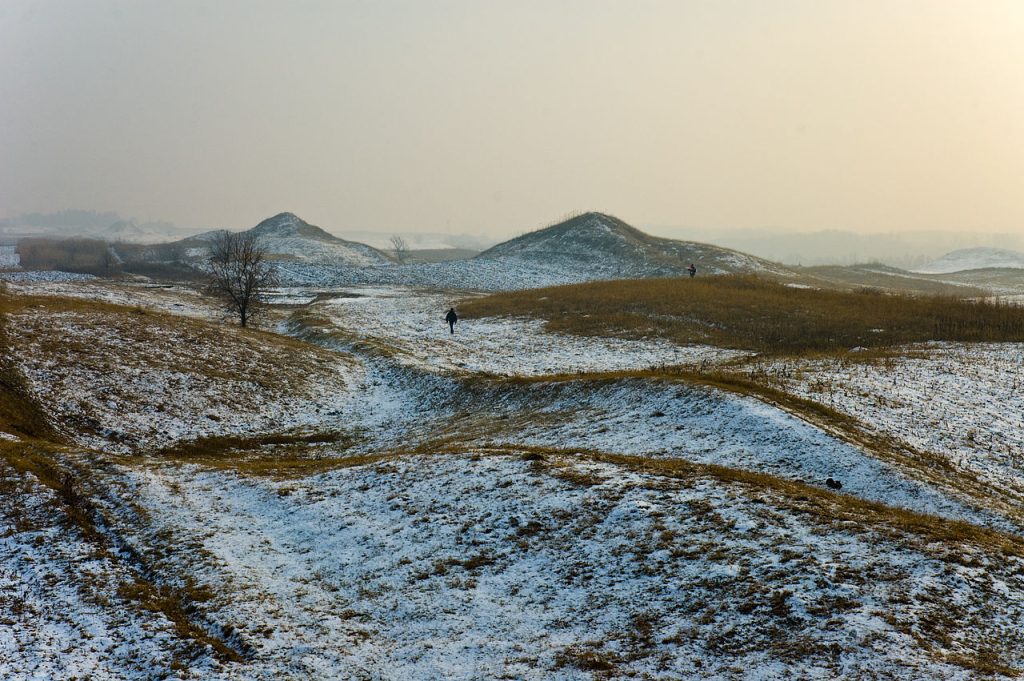 estled deep within the earth, Movile Cave harbors a hidden world that has fascinated scientists with its extraordinary and isolated ecosystem. This remarkable cave, estimated to be around 5 million years old, has revealed a host of unique and mysterious discoveries. In this article, we embark on an exploration of Movile Cave, delving into the fascinating findings that shed light on the enigmatic realm of subterranean life, unusual adaptations, and the intricate web of ecological interactions. Join us as we unveil the secrets of this ancient and isolated ecosystem.
estled deep within the earth, Movile Cave harbors a hidden world that has fascinated scientists with its extraordinary and isolated ecosystem. This remarkable cave, estimated to be around 5 million years old, has revealed a host of unique and mysterious discoveries. In this article, we embark on an exploration of Movile Cave, delving into the fascinating findings that shed light on the enigmatic realm of subterranean life, unusual adaptations, and the intricate web of ecological interactions. Join us as we unveil the secrets of this ancient and isolated ecosystem.
The Marvels of Subterranean Life
Movile Cave presents an otherworldly environment that challenges our understanding of life’s boundaries. Within its depths, scientists have encountered a diverse array of specialized organisms that have adapted to the cave’s unique conditions. These include unique species of bacteria, fungi, invertebrates, and even eyeless, colorless animals that have adapted to the complete absence of light.
One of the most fascinating aspects of the cave’s ecosystem is the presence of sulfur bacteria, which form the basis of the food chain. These bacteria derive energy from chemosynthesis, a process that does not rely on sunlight but rather on the chemical reactions involving sulfur compounds found in the cave’s air and water. This intricate energy flow sustains a delicate balance within the ecosystem.

Movile Cave’s ecosystem exhibits a remarkable level of interdependence. Organisms have adapted to specific niches, each playing a vital role in maintaining the delicate equilibrium. For example, some bacteria consume toxic hydrogen sulfide, while other organisms, such as tiny crustaceans, rely on the bacteria for sustenance. The intricate web of interactions in this isolated ecosystem serves as a testament to the remarkable resilience and adaptability of life.
Unraveling the Mystery of Isolation
The unique aspect of Movile Cave lies in its isolation from the outside world. The cave’s thick walls, limited airflow, and unique geology create an ecosystem that has been cut off from the surface for millions of years. This isolation has resulted in an ecosystem unlike any other, with distinct evolutionary pathways and adaptations.
Movile Cave’s isolation has contributed to its high levels of biodiversity and endemism. Many of the species found within the cave are found nowhere else on Earth, making them of immense scientific interest. The study of these unique species provides valuable insights into the processes of adaptation, speciation, and the limits of life in extreme environments.

The isolation of Movile Cave raises intriguing questions about the origins of its ecosystem. Scientists believe that the cave was likely sealed off from the surface during geological events, which created the conditions for the unique evolutionary trajectory of its inhabitants. Exploring the evolutionary history of Movile Cave’s species offers a glimpse into the mechanisms that drive diversification and adaptation in isolated environments.
Lessons for Astrobiology and Exoplanet Research
Movile Cave’s isolated ecosystem holds great significance for astrobiology and the search for life beyond Earth. The extreme conditions and unique adaptations of its organisms provide valuable insights into the potential for life to thrive in seemingly inhospitable environments. By studying the resilience and adaptability of Movile Cave’s inhabitants, scientists can refine their understanding of the conditions that may support life on other planets or moons in our solar system and beyond.
Additionally, the cave’s sulfur-based ecosystem mirrors the potential conditions found on early Earth and other celestial bodies. The study of sulfur bacteria and chemosynthetic processes contributes to our understanding of the origins of life and the potential for alternative biochemistries.
Movile Cave serves as a natural laboratory for astrobiologists, allowing them to study the adaptations and survival strategies of organisms in an extreme environment. These investigations inform the search for signs of life in our solar system, such as the exploration of subsurface oceans on icy moons like Europa and Enceladus.
Conservation and the Future of Movile Cave
The unique and fragile ecosystem of Movile Cave calls for diligent conservation efforts to ensure its long-term survival. The limited size and delicate nature of the cave make it particularly vulnerable to human disturbances and environmental changes. Conservation measures, such as regulating visitor access, monitoring air and water quality, and raising public awareness, are vital to preserving the integrity of this exceptional ecosystem.

Movile Cave’s scientific value and contribution to our understanding of evolution, ecology, and astrobiology underscore the need for responsible stewardship. Collaborations between scientists, local communities, and conservation organizations are crucial for implementing sustainable management practices and preserving this invaluable natural heritage.
In addition to conservation efforts, ongoing scientific research in Movile Cave continues to shed light on the intricacies of its ecosystem. Further exploration and the application of advanced techniques, such as genetic analysis and microbial ecology studies, hold promise for unraveling even more secrets from this ancient and isolated cave.
Movile Cave stands as a testament to the resilience, adaptability, and extraordinary diversity of life. Its 5 million-year-old isolated ecosystem offers a window into the mysteries of subterranean life and provides invaluable insights into the boundaries of life on Earth and beyond. The cave’s unique organisms, intricate ecological interactions, and the lessons learned from its isolated environment contribute to our understanding of evolution, astrobiology, and conservation. As we continue to explore and study Movile Cave, its enigmatic secrets will continue to inspire awe and expand our knowledge of the incredible diversity and resilience of life on our planet.
Avid Writer with invaluable knowledge of Humanity!
Upcoming historian with over 30 million views online.
“You make your own life.”





